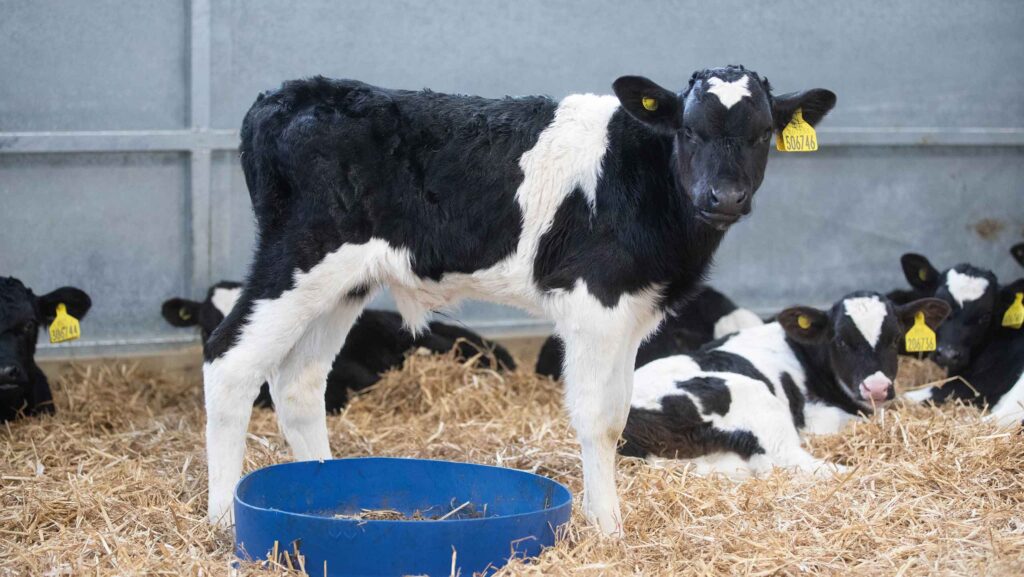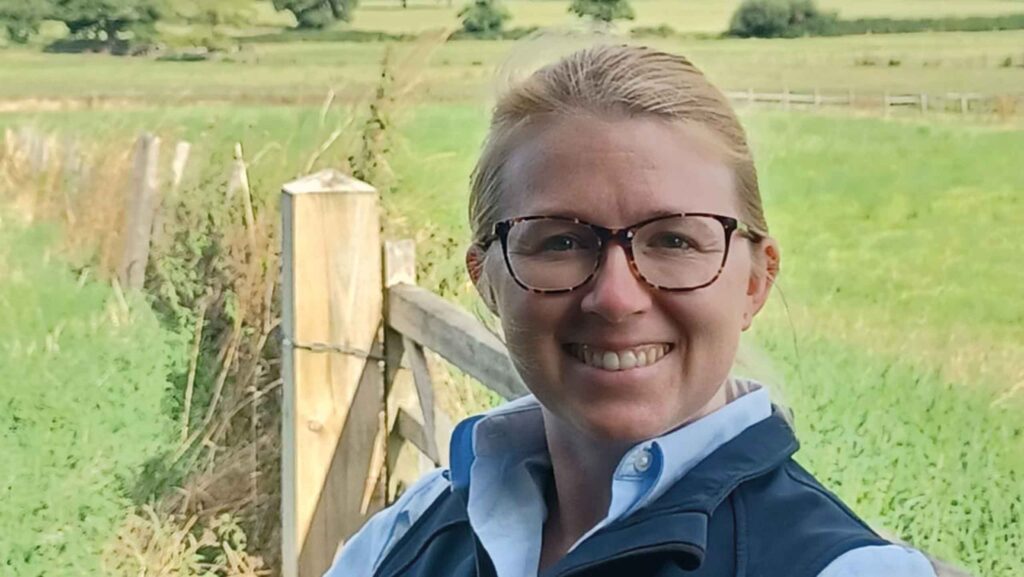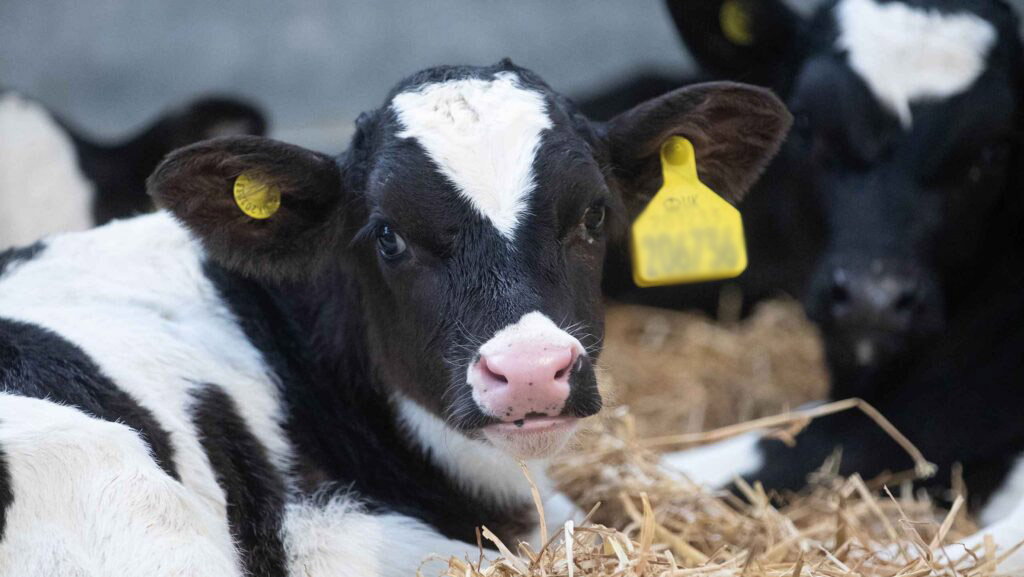Why vaccination is not a silver bullet for calf pneumonia
 © Tim Scrivener
© Tim Scrivener Calf pneumonia prevention relies on high standards of housing, nutrition and husbandry. Lara Robinson-Fletcher of Daleside Veterinary Group offers her expert advice.
See also: How to make routine dairy tasks easier with a calf kitchen

Lara Robinson-Fletcher © Daleside Veterinary Group
Pneumonia is a common and costly disease of both beef and dairy calves, and is detrimental to calf welfare. A pneumonia outbreak can be demoralising and expensive.
Calves are particularly susceptible to pneumonia because, compared with other animals, cattle have a relatively small lung capacity and narrow airways.
Many different pathogens cause pneumonia. Some are viruses, which cannot be cured by antibiotics, including infectious bovine rhinotracheitis, bovine respiratory syncytial virus and bovine parainfluenza-3.
Others are bacteria, such as mycoplasma bovis, histophilus somni and pasteurella multocida.
However, pneumonia is a multifactorial disease – its cause cannot be attributed to one thing. Pathogens alone do not cause pneumonia.
The physiological state of the animal and the environment it is kept in are big contributory factors. This means pneumonia prevention must be executed with all these elements in mind.
Calf environment
Regarding the calf’s environment, consider the following:
Temperature Is the calf accommodation too hot or too cold? A calf’s thermoneutral zone is between 10C and 25C from birth to four weeks of age. After this, it sits between 0C and 23C.
This means that for calves less than four weeks of age, if external temperatures drop below 10C – which was the case for six months of the year in 2023 – extra measures need to be put in place to keep calves warm.
These include deeper bedding, increased milk feeding or heat lamps. It is vital to measure ambient temperatures, and even more vital to know what the temperature is inside the calf accommodation.
Dampness Is the calf accommodation damp or humid? Damp housing can be a result of poor ventilation, inadequate drainage, or from preparing milk and washing buckets in the same building as the calf pens.
Flooring for calf pens should have at least a 5% slope towards a drainage channel and away from neighbouring pens. Ideally, facilities for mixing calf milk and washing buckets should be located close to calf housing, but not in the same airspace, as this creates a damp environment.
Ventilation Most of the time, ventilation is inadequate. However, in correcting it, it is essential not to create draughts. Draughts can dramatically change the lower critical temperature of a calf’s thermoneutral zone.
As an example, the lower critical temperature of a newborn calf kept in an area where there are draughts of airspeeds equating to 2m/sec would be 17C, which is 10C more than without the draught. Airspeeds at calf height should be below 0.25 m/sec.
Common mistakes with ventilation include:
- Two or more sides of calf accommodation without an inlet of air
- Turbulent airflow caused by differences in inlet area on sides of a building
- Large inlet areas creating faster airspeed at calf height (wide openings are acceptable as long as they are not at calf height)
- High volume of airspace (sheds that are too large for calves)
- Not having a roof outlet
- Age of animals sharing an airspace.
Ideally, there should not be more than a two-week age gap in a pen of calves, and there should definitely not be a difference of more than three months in age of youngstock sharing the same airspace.
This is because older animals pass pathogens to younger animals.
Calf health and husbandry
The calf itself is also a part of the multifactorial picture of pneumonia. Several factors come into play:
Colostrum Calves require 10% of their body weight in good-quality colostrum (measuring more than 22% on a Brix refractometer) that has been collected and fed cleanly within six hours of birth, and ideally within two hours.
A similar feed is needed within 12 hours of birth.
Source Bought-in animals are a big risk factor for pneumonia.
Not only have they been through the stress of moving premises and possibly held for a time in a collection centre or market, but often, the health status of the source farm is not known.
It is much better to breed replacement stock on-farm or buy from a single, identifiable source, where colostrum management is known to be good and disease rates are low.
Stress Too many stressful procedures carried out too close together can cause stress in calves, which suppresses the immune system and increases the risk of pneumonia.
Disease Does your farm test for bovine viral diarrhoea? This disease is immunosuppressive and its presence on farm will increase a calf’s risk of developing pneumonia.
Nutrition It is surprising how many calves reared on milk powder are still being underfed in the UK.
A calf fed 2 litres of milk twice a day is starving, and not only needs to use energy to keep warm, reducing growth rate, but is also immunosuppressed and more susceptible to pneumonia.
Aim to feed 900g of good-quality milk replacer powder a day, and discuss calf nutrition with the farm vet.
What to do in an outbreak
If you experience a pneumonia outbreak, involve your vet from the start. Blanket-treating with antibiotics might be completely inappropriate for the type of pneumonia you have.
The vet can assess all the risk factors for pneumonia on the farm, and suggest measures to improve them.
They can also perform diagnostics to determine what pathogens are causing the pneumonia outbreak.
These may include bronchoalveolar lavage, where a sample of fluid is collected from the lungs for testing, which is an excellent method for finding out what are pathogens are responsible.

© Tim Scrivener
This assessment enables the most appropriate treatment to be used and can help in deciding whether a vaccination regime is appropriate.
However, vaccination is not a magic bullet. Nutrition, environment and general calf health are all important and if these are not right, vaccines will not work as well.
It is also worth remembering that vaccines tend to be on a relatively narrow spectrum regarding pathogens they protect against, and what age of calf they can be used from.
This means it is very important to tailor a vaccine programme to the individual farm situation and not just assume that an intranasal vaccine, for example, is a one-hit wonder for preventing pneumonia.
Long-term effects
The most important thing to understand is that a calf that has contracted pneumonia lives with the effects throughout its life.
Investing time and money in a pneumonia prevention plan is an excellent way of helping to preserve the future health and productivity of the herd.
Profitable, high-welfare adult cattle come from excellent management of youngstock.
